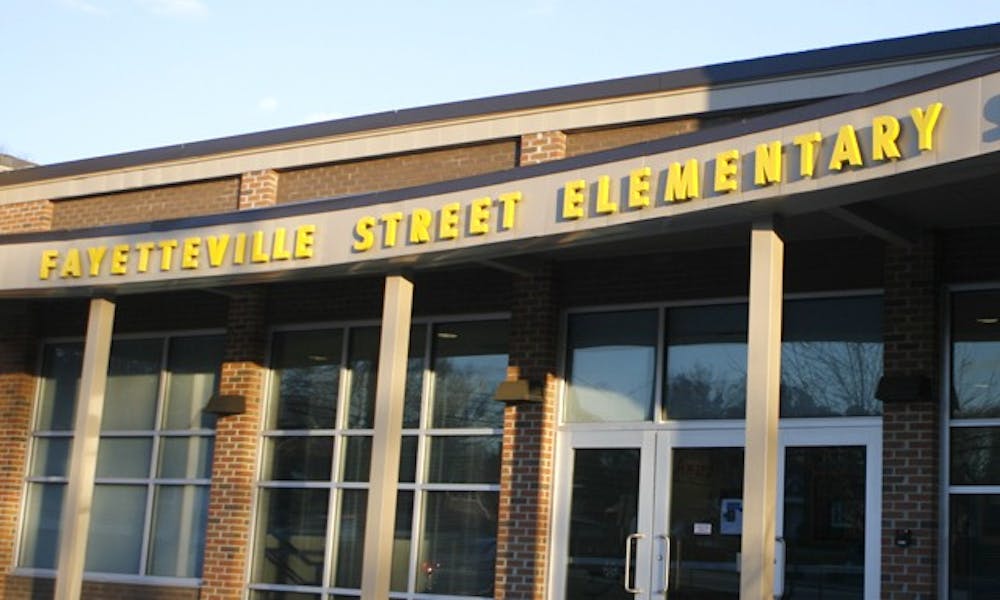Starting this year, six Durham schools will receive extra help to close a racial achievement gap.
The National Education Association Foundation awarded Durham Public Schools a $1.25 million grant from its Closing the Achievement Gaps Initiative, the group announced last week. The money will combat dropout rates among black males in the school system.
Almost 45 percent of black males in the district do not graduate on time, compared to only about 13.5 percent of white males, according to DPS statistics provided to the NEA.
“We know that at this time, African-American males are at the lowest of any demographic,” said DPS School Board Chair Minnie Forte-Brown, referring to graduation rates “They are not graduating high school with their cohort.... And when they are graduating, many times they are ill-prepared for college. Now this means that there is something that we should be doing because we cannot allow a subgroup of individuals in our district to be at this point.”
The money, which will be spent over a period of five years, will go toward developing strategic interventions that close the achievement gap between black males and their peers. The Durham Association of Educators is working with DPS to explore strategies like teacher training, cultural competence, mentoring, academic coaching and home visits, DPS School Board Vice Chair Heidi Carter said.
The grant will go to six schools in Durham: Eno Valley Elementary, Chewning Middle, Northern High, Fayetteville Street Elementary, Lowe’s Grove Middle and Hillside High.
Individual schools will be allowed to determine which specific strategies they will implement, said DAE President Kristy Moore.
This is not the first time that NEA funds have gone toward initiatives meant to close the achievement gap for minority students. Almost six years ago, the NEA foundation invested $6.2 million in its pilot initiative, which sought to narrow the achievement gap in schools districts located in Chattanooga, Tenn., Milwaukee and Seattle.
In the three pilot sites, achievement gains have been made since the program was implemented, and each site has seen certain improvements, according to the NEA. In the pilot schools in Milwaukee, high school graduation rates among low-income and minority students are now at 70 percent and growing four times faster than the district average, according to NEA statistics.
As a result of the positive changes in teaching and learning in these pilot communities, NEA extended the project. This past week, Durham and two other school districts—Columbus, Ohio and Springfield, Mass.—were chosen among 14,000 other school districts who also submitted grant proposals.
“The NEA Foundation established a set of eligibility requirements, implemented a competitive process and selected sites based on their readiness and capacity to achieve the... initiative outcomes,” William Miles, NEA Foundation director of programs, wrote in an e-mail. “In particular, we looked for evidence of collaboration between the local educators’ association and district, meaningful analysis of data about the achievement gaps, focus on teaching and learning, parental engagement and the potential of systemic transformation as a result of these efforts.”
Carter also said Durham was chosen for a reason, adding that the relationships between the DAE, DPS, University of North Carolina at Chapel Hill, North Carolina Central University and local business leaders were a key basis for earning the grant.
“One reason we received the grant was that Durham has a track record of successful collaboration among the educators at the teacher level and at the administration level, as well as with the community,” Carter said. “It’s about community partnership.”
Even though the $1.25 million is a fraction of the district’s $451 million annual budget, Forte-Brown said it will make a big difference in the community.
“It is really exciting for Durham,” she said. “When we look at where this grant has been placed, it has made a vast difference. We are getting ready to change some things. When we change this, we change Durham. When we do this, the rippling effect is going to be enormous for our city.”
Get The Chronicle straight to your inbox
Signup for our weekly newsletter. Cancel at any time.

